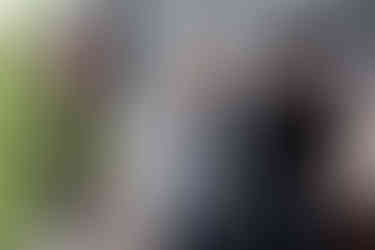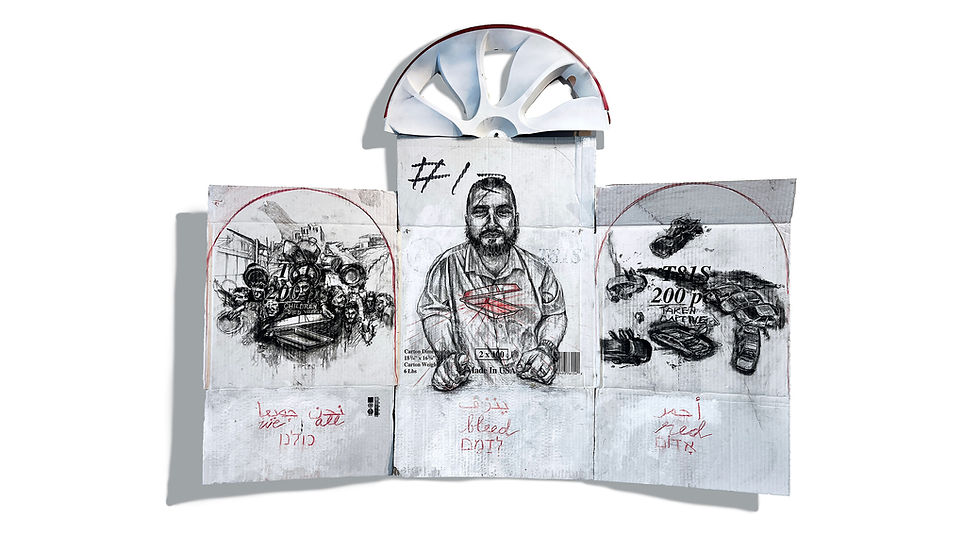UC Irvine’s Claire Trevor School of the Arts Department of Art: A Culmination of Legacy & Resurgence
- Encore Content

- Sep 22
- 6 min read

Encore Content stories are produced in paid partnership with the featured subjects. Each piece is written and edited with involvement from our editorial staff to ensure accuracy and clarity, with all information provided or approved by the sponsor. These stories do not necessarily reflect the views of Culture OC and do not constitute editorial endorsement. Each sponsored story is clearly labeled and created in alignment with our editorial standards.

by Peter Lefevre for UC Irvine's Claire Trevor School of the Arts
Drive past the carefully manicured lawns of Irvine, the most famously planned city in America, and the last words that occur to you might be “radical” and “avant garde.”
Yet those are exactly the terms that define the 60-year legacy of UC Irvine’s Department of Art. There, in the center of the pristine neighborhoods, grows a wild and untamed garden.
And that’s exactly how they want it.
“The conservatism of the surrounding area and the political and formal radicalism of the department are not unrelated,” says artist Kevin Appel, chair of the Department of Art and Executive Director of University Art Galleries at UC Irvine’s Claire Trevor School of the Arts.
“The department’s energy has always been, in part, a response to the times we live in, but perhaps the particular location within Southern California has also spurred these responses.
“I think from Day One the avant garde was a focus of the department. The proximity to L.A. and the L.A. art scene of the ’60s meant that when they were hiring faculty and lecturers, they pulled from that community and drew people who were at the forefront of their mediums and thinking. It formed a crucible of open experimentation.”

That experimentation will be on full display from September 27–December 13 as the School presents “The Inoperative Community: Exhibition X Practice, UC Irvine 1965-2025,” at several galleries on campus. This archival exhibition of key works from the University Art Galleries’ history tells the story of how the university’s boundary-pushing community has shaped the artistic landscape of the region and beyond.
With such a massive undertaking, the exhibit has required three curators: Appel, who has focused on the Department’s work from the ’60s to the ’80s, Sasha Ussef, Associate Director and Curator of the University Art Galleries who has focused on work from the ’90s, and Juli Carson, Professor and Director of University Art Galleries (UAG), who has curated work since the 2000s
It’s an event that Carson has been preparing for a long time.
“In many ways, the Inoperative Community is an exhibition that’s been in the making for the past twenty years, ever since I joined the Art Department,” she says. “In those early days, I began immediately began organizing and working on the UAG’s archive, which now spans 60 years, knowing that someday we would launch a comprehensive archival show about the Department’s history of exhibition making. That moment has finally arrived! “
The Inoperative Community features work from a stellar array of artistic luminaries. A small fraction of the visionary and accomplished contemporary artists whose efforts are on display include Larry Bell, Chris Burden, Roy Lichtenstein, Tony DeLap, Nancy Buchanan and Carrie Mae Weems. Archival materials in the show bring in other bold-faced names like John Baldessari, Bruce Nauman, Billy Al Bengston, Edward Kienholz, Robert Irwin, Jean-Michel Basquiat, Yvonne Rainer, Catherine Opie, and Ed Moses. It’s a remarkable legacy of excellence, a celebration of 60 years of bold, exploratory artmaking.

Of those influential artists, Appel points to several as key figures in the forging of the Department’s identity: DeLap, a West Coast minimalism and Op Art pioneer, Burden, a controversial risk-taking performance artist (and also creator of the delightfully playful Metropolis II and iconic Urban Light sculpture in front of the Los Angeles County Museum of Art), video and performance artist Buchanan, a central figure in the Feminist Art Movement, and installation artist Irwin, perhaps best known for creating the Central Garden at the Getty Center in Los Angeles.

“Irwin, who came in as lecturer, has come up a lot as someone who was incredibly inspirational,” Appel says. “He allowed students to go out on the ledge and was constantly getting students to push themselves beyond the boundary of what is known.
“At that time, the school was forming, the art was forming, and the buildings were not up yet. It rose out of this promethean soup with a certain amount of openness and lack of formality. If you think of New York as the established art world, California didn’t have that same kind of commercial or critical focus, so it was more of the Wild West, and that meant that experimentation was the lingua franca of California artists, partially because they weren’t so heavily in the spotlight. That’s how we were able to create a landing pad for people like Chris Burden or Nancy Buchanan, who pushed art practice forward in the early days of performance art and installation, outside the typical object-thinking. And Tony DeLap, one of the founding professors, was responsible for bringing in a lot of people to teach and had far reaching ideas of who to bring in and what could and couldn’t be done by students and faculty.”
Other central figures in the history of the Department include the influential and groundbreaking video artist and faculty member emeritus Ulysses Jenkins and scholar, artist, and curator Catherine Lord, Professor Emerita and member of the American Academy of Arts & Sciences, whose work and insights shaped a generation of young artists when she served as chair of the Department of Art from 1990-1995.
UC Irvine has continued to invite prolific artists to join the faculty, including Ulysess Jenkins, left, as well as new media artist, writer Antoinette LaFarge and conceptual and socially-engaged artist Daniel Joseph Martinez. Photos courtesy of the artists.
And while this exhibition pays homage to UCI’s artistic legacies, it also highlights the resurgent present. 2025 saw alumni Phil Chang and Charisse Weston and faculty member Coleman Collins named as Guggenheim Fellowship recipients, and alumna Stacy Kranitz received a 2025 Pulitzer Prize for Public Service, honoring her contributions to Life of the Mother, ProPublica’s reporting on abortion laws and maternal care.
The vibrant present is also represented in the exhibition through three works specifically commissioned for The Inoperative Community.
“In the Contemporary Arts Center lobby, Jered Frigillana, Simon Klein, and Jacob Lenc—UCI art students—have mounted a largescale drawing titled A Labyrinthine Impulse that reconstructs, while reconfiguring, Sol LeWitt’s legendary (now erased) wall drawing in Winifried Smith Hall, entitled The Location of a Circle (1975),” says Carson. “In Room Gallery, a drawing culled from Charles Gaines’ archival notes on Theatre of Refusal, an exhibition he curated at UCI in 1993, is reconfigured as a vinyl wall work, entitled Race x Sex Schema. And in UAG, John Knight has allowed us to reconstruct a work he made for his UCI MFA application in 1971, titled A Work in Situ.
“Taken together, these three artworks immerse us in the past as much as they are reinvented in the present, where they still powerfully speak. It’s this transgenerational dialogue—being both there in the past and here in the present—that the Inoperative Community is committed to staging. It’s a compelling proposition as those cultural events of the past, which produced this rich reservoir of artwork, (are) repeating in the present.”

It's that commitment to the next generation, and to the legacy that that generation inherits, that has given UCI its strength and influence in this field. Artists at and from UCI have an outsized footprint, shaping contemporary art discourse, creating works that shock and disturb, provoke questions, address controversy, challenge the status quo, give a voice to the marginalized. All of that, hidden within the city of Irvine’s quiet, elegantly planned, perfectly perfect perfection.
Learn more about the upcoming exhibition, The Inoperative Community: Exhibition X Practice, UC Irvine 1965-2025, and public reception event on Saturday, Oct. 11, 2025 at www.arts.uci.edu
BONUS: Hockney and Moses at UCI
Major American artists David Hockney and Ed Moses have been a part of the growth of the Department of Art at UCI.
David Hockney in 1968. PHOTO 1: Hockney, left, visits with inaugural dean of the School of Fine Arts, Clayton Garrison during an art exhibition on campus. PHOTO 2: Hockney, with his trademark shock of white hair, mingles with UCI artists and director of the University Art Gallery John Coplans at a faculty art exhibit. Photos courtesy of UC Irvine Special Collections/Beth Koch, © UC Regents
The Contemporary Arts Center Gallery hosted the exhibition “Ed Moses: Cross Section” in 2014. PHOTO 1: A view of the installation. PHOTO 2: From left, Daniel Joseph Martinez, Ed Moses and current gallery director Professor Juli Carson, at the opening reception. Photos courtesy of UC Irvine Special Collections, © UC Regents




























_gif.gif)



%20(1)_gif.gif)